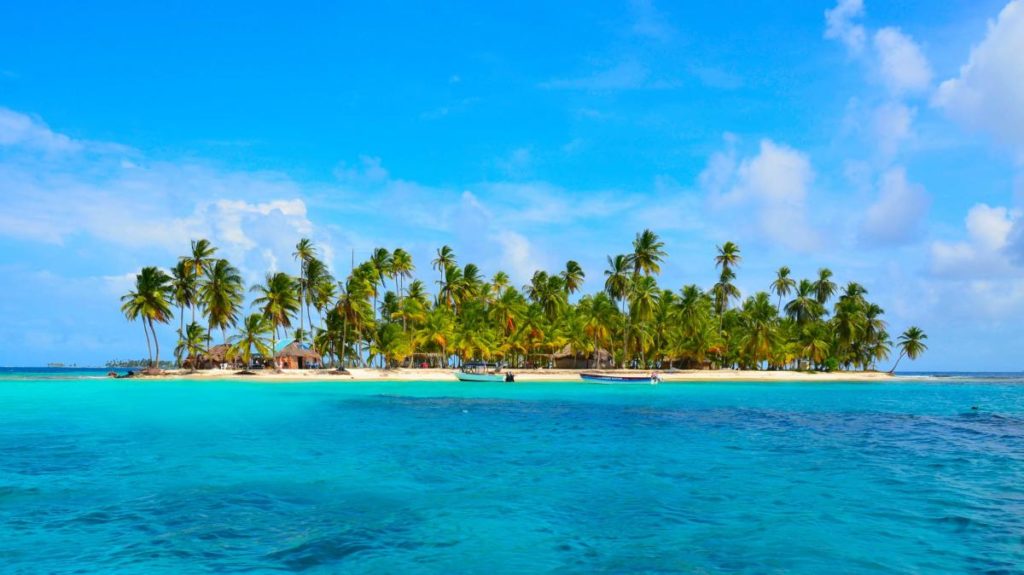Visit the tropical archipelago of San Blas, home of the Guna Yala people, for a more culturally enriching take on ‘beach paradise’
When you think of tropical isles, the images that most often spring to mind are blue skies and white sands. Or maybe lavish overwater villas and infinity pools. Culture rarely gets a look in. But the San Blas Islands – a collection of almost 400 heavenly specks sprinkled along Panama’s Caribbean coast – do things differently. While the scenery is five-star, the amenities are rather more rustic. And what the archipelago lacks in glamour it makes up for in rare indigenous insight.
“The San Blas islands comprise some of the most diverse, unique and spectacular natural places on earth,” guide Marco Gandásegui (anconexpeditions.com) explained. “Add to that the determined people who inhabit and protect this territory and you have something truly special.”
Those people are the Kuna Yala or, as they identify themselves, the Guna Yala. Since the aftermath of a rebellion in 1925, sparked by the suppression of Guna Yala culture, the province has been self-governing and is fiercely protective of its past. Only tribe members may live or own property within the Guna Yala Comarca – an area comprising the islands and a narrow strip of mainland – ensuring an authentic experience for those who visit.

The exact origins of the Guna Yala are unknown, but in the 16th century they were living in what’s now north Colombia; following the arrival of the Spanish, they travelled north to San Blas. The area is now home to around 50,000 Guna Yala spread across 49 inhabited islands.
Guna communities are characterised by bamboo-thatched homes, their living quarters dominated by hammocks. “To us, hammocks represent the umbilical cord and a deep connection to our Godmother, who is the earth,” a Guna elder told me. There’s every chance you’ll be invited inside to see for yourself. One thing you’ll definitely see is Guna women wearing their distinctive dress: molas (colourful layered fabrics with patterned panels) and winis (beaded wraps) often placed around the shins and lower legs.
Life here is slow, refreshingly so. “We don’t pay taxes and we don’t have electricity bills, so there’s no real need for money. The small amount that people do earn from tourism and selling coconuts to the Colombians goes towards buying sugar, clothes and material to make molas,” explained local guide Igua. And that’s perhaps as close to paradise as it’s possible to get.
6 ways to experience Guna Yala culture in San Blas

Bamboo-thatched huts in San Blas (Alamy)
1. Yandup Island Lodge
Owned by the delightful Alvarados, a Guna family from nearby Playón Chico, this lodge is arguably the best accommodation in all the land. There are two choices of cabins: overwater or sea-facing, all with mosquito nets, private bathrooms and 24-hour electricity. Best of all though, it offers some of the most unusual cultural tours including a visit to the local cemetery and performances of the traditional kammu burwi dance. (yandupisland.com)
2. Chichime Island
One of the archipelago’s stand-out destinations, Chichime Island is located 45 minutes by boat from the mainland and is small enough to walk around in less than 20. Book one of the five solar-powered beach cabins at Ogob Nega – it’s not five-star luxury but the sensational beaches more than compensate for the shared bathrooms. (ogobnega.com)
3. Lemon Cays
Sail around these sandy cays on a traditional urbor (ur meaning dugout canoe, bor meaning cloth). The Guna have used this mode of transport for generations; now, some are fibreglass and most have an outboard engine. An afternoon spent on the water, pausing to catch some naluginnid (red snapper) for lunch,
is simply blissful.

The traditional geometric patterns of molas were once painted directly onto the body, but were transferred to fabric after Spanish colonisation (Alamy)
4. Gardi Sugdup (Cartí Sugtupo)
This is the place to go for a masterclass on Guna culture. Workshops here cover everything from Guna music and traditional medicine to clothing. You’ll also have the opportunity to see how the most iconic elements of the Guna wardrobe are made, such as molas and winis.
5. Holandes Cays
Embrace your inner Robinson Crusoe with a day or two on your own private island within this clutch of cays. Charter a boat to take you to the outer rim of the islands, pick an uninhabited piece of paradise, set up camp and disconnect completely. Barter with locals on nearby islands for water, beer and other essentials.
6. Nusagandi Nature Reserve
A haven for birdwatchers, Nusagandi is located on the mainland, along a road that brings you to the coast directly on the continental divide between the Caribbean Sea and the Pacific Ocean. Here, bird species from both ridges congregate and thrive in a primeval rainforest laced with walking trails used by the Guna. Don’t miss Ibe Igar waterfall.
Get Vaccinated and stay safe!!
